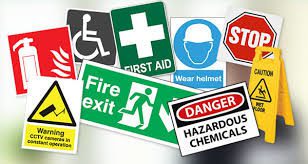
Let’s get compliant! If you read our last blog, we talked about the most common places to find hazardous chemicals in a school. Here we are going to give you tips on how to make your school compliant and solutions to potential violations.
Science labs
This was the most common place to find hazardous chemicals due to the nature of the chemicals used in Chemistry laboratory experiments. Ways to stay in compliance are:
- Yearly 3rd Party Environmental Health & Safety Audit
- Training
- Chemical Hygiene Plan
- Approved List of Chemicals
- Budget for Disposal
Maintenance Areas
Maintenance is the backbone to a clean, safe, and functional school, but can also be the resting place for hazardous chemicals, supplies, and stockpiles of old paints. Things add up and eventually cause compliance issues if it is not addressed. Here are some waste management tips for maintenance buildings and storage areas:
- Use what you have and buy what you need.
- Use one chemical or product for a specific function (ex. Air Freshener, Floor Cleaner)
- Dispose of old & unused chemical products.
- Create a list of approved chemical products to use.
Art Classrooms
Lastly for common places to find hazardous chemicals, the art department. As stated in our previous blog, before latex and acrylic paint became popular, heavy metal paints and glazes were used in art and pottery classrooms. Ways to avoid violations in this department:
- Properly dispose of Toxic Paints and glazes
- Use non-toxic paints
- Switch to digital photography
- Have proper container storage for photo fixer and developer and properly dispose of this hazardous waste.
Get Compliant
To be sure that your school is compliant with OSHA, DEP, and DOE it is imperative to have competent faculty and staff. Training is the key to success in compliance and deficiency-free inspections. It is important for your school to have a Chemical Hygiene Plan, Chemical Hygiene Officer (CHO), yearly health and safety audits, budget for waste disposal, an understanding of the volume of chemicals being used versus what is being purchased, and exactly what your chemical inventory is.
Chemical Inventory
Some questions you may ask about the inventory:
- What is the shelf life of these chemicals?
- Do we have chemicals that have been banned from schools? i.e. Mercury
- What chemicals are being used and what chemicals are no longer needed?
- Is my storage in compliance?
- When does a chemical become a waste?
- Who can help us be in compliance?
